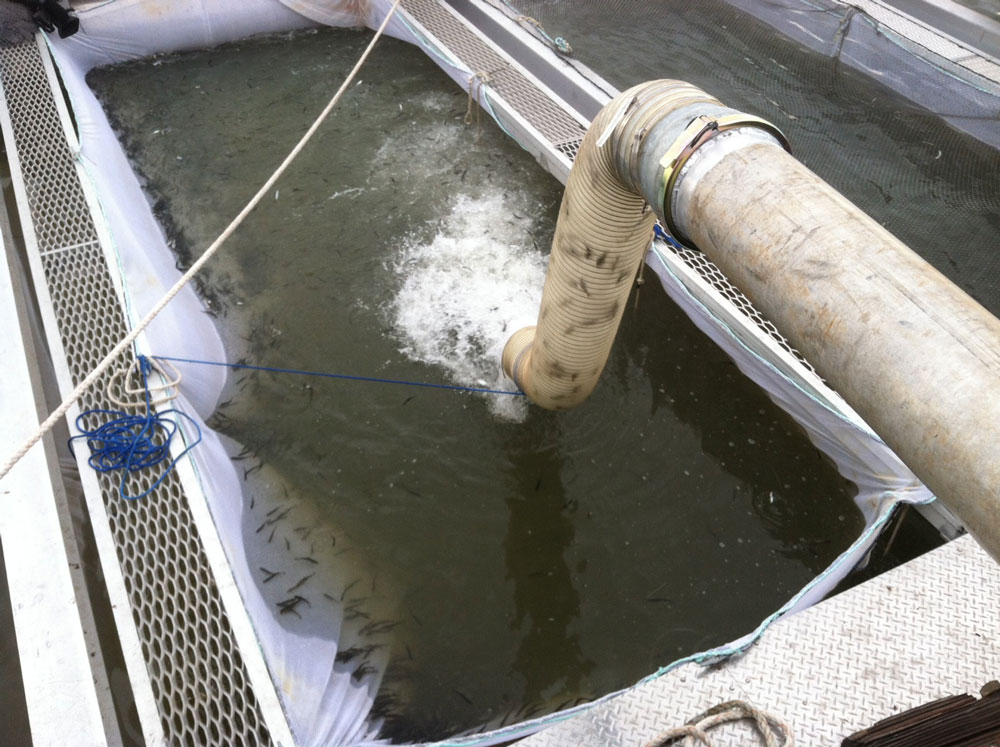Updated September, 2020
We’ve had a decent ocean salmon fishing season. So far reports from Sacramento River guides have been mixed but we’re still hoping for a strong showing of salmon inland as the fall progresses. Some of our commercial members have had a pretty good year and are especially thankful that good prices held up.
The CA Dept. of Fish and Wildlife believes there are about 473,183 adult salmon swimming around in the ocean now. This is better than their prediction last year at this time of 379,600 and should lead to a decent fishing season. The forecast of 379,600 salmon in 2019 ended up being about 136,000 shy of what was eventually counted after fishing and spawning surveys.
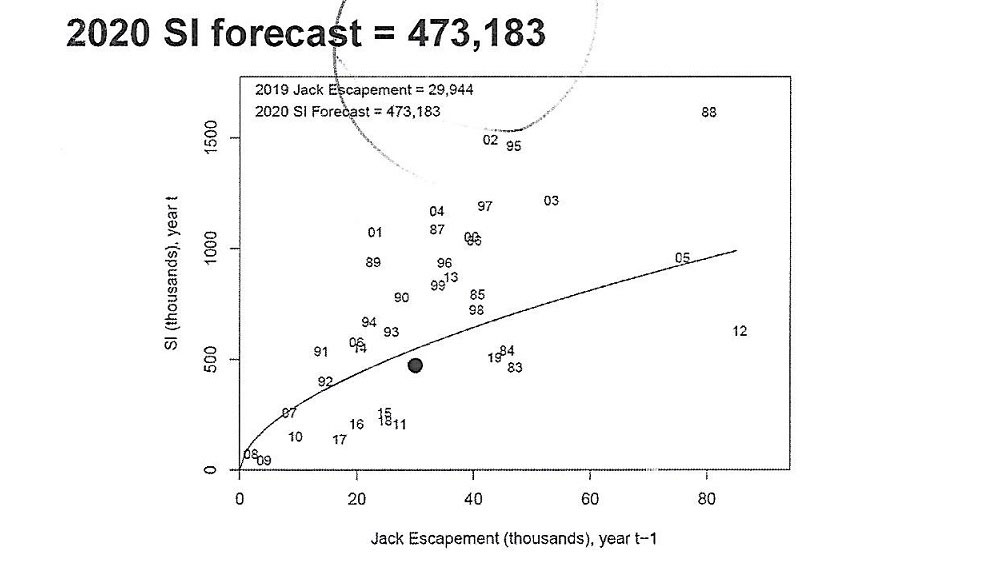
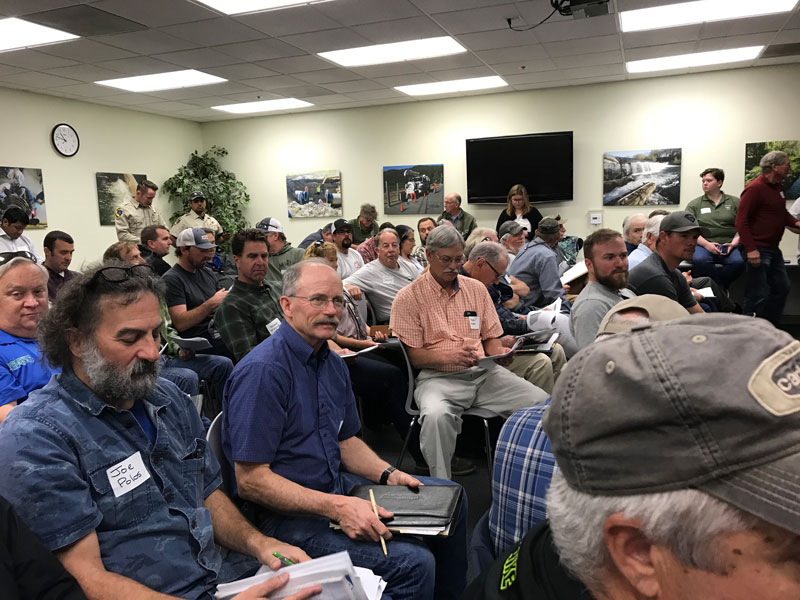
These numbers were released at the annual Salmon Information meeting on February 27 in Santa Rosa. The predicted 473,183 Sacramento salmon in the ocean now will be factored into fishery manager decisions about when and where salmon fishing will be allowed this year off the coast. It will also be used by the state to almost certainly allow a two-fish daily bag limit for salmon in inland waters.
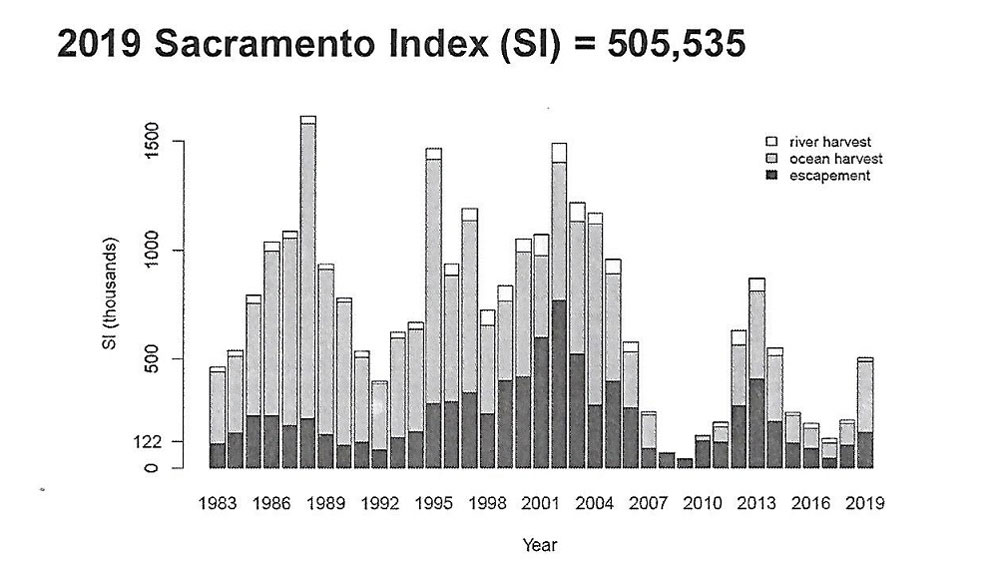
The return of adult winter run to the upper Sacramento River provided another relatively bright spot in 2019 with an estimated 7,569 adult salmon returning to spawn, the highest number since 2006. Their offspring are being counted downstream in Red Bluff where special counting traps are moored in the river. These traps have already counted an estimated 3.8 million, the highest in the last seven years.
Not all of the news was good. Returns of salmon to the Klamath River came in at only about half of the minimum number set by fishery managers. Instead of getting the targeted 40,700 adult spawners back into the Klamath, only 20,245 were counted after evading hooks and nets in the ocean and river. As a result, fishery managers will take extra precautions in the 2020 ocean fishery to protect the expected low number of Klamath River salmon in the ocean.
The value of protecting natural parts of the rivers is repeatedly underscored in the info CDFW released. For instance, an estimated 75 percent of the adult salmon that returned to the Sacramento basin in 2019 spawned in the wild and natural origin salmon factored big in the catch. The Feather and upper Sacramento River each got about 40 percent of the spawners while the American River got about 19 percent. The San Joaquin saw about 18,000 adult fish return and the Mokelumne hatchery reported good returns.
The National Marine Fishery Service wanted to see 160,000 adult salmon return to the Sacramento basin in 2019 to ensure a healthy fishery. When all was said and done, about 162,000 were counted, although some inland fishing guides reported poorer fishing than that number would suggest. In addition, just under 30,000 two-year-old salmon returned. These provide the base number used to calculate the number of their brethren staying out in the ocean for an extra year which is how the 473,183 forecast was derived.
The contribution of the various hatcheries to the ocean salmon fishery in 2019 changed from 2018 when the Mokelumne hatchery was the biggest contributor. In 2019 the commercial trollers caught more Coleman hatchery fish than any other, followed by Feather River, Nimbus and the Mokelumne hatcheries, in that order. In the ocean sport fishery, Feather River hatchery fish were the biggest contributor followed by Coleman. Nimbus and Mokelumne hatcheries both contributing 19 percent of the hatchery fish caught. The bigger contribution of the Coleman hatchery is not surprising considering the excellent spring outflows in 2017 which greatly boost the survival of these fish. Coleman released over 12 million baby salmon that spring, more than any other hatchery.
In all, the commercial fishery caught slightly more hatchery fish than natural origin fish (53% vs 47%). The sport ocean fishery catch was 58 percent hatchery fish and 42 percent natural-origin fish.
Fishery managers will take all of this info to the Pacific Fisheries Management Council (PFMC) and craft three season options when they meet the first week of March. The three options will then go out for public comment and be finalized when the PFMC reconvenes in early April.
The CDFW salmon report breaks out where along the coast salmon were caught. Anyone who followed reports last year won’t be surprised to learn that most of the ocean salmon were taken in the San Francisco cell which stretches from Pigeon Pt. in southern San Mateo County all the way up to Pt. Arena in southern Mendocino County. The second most productive area was in what’s called the Monterey cell which stretches from Pigeon Pt. south all the way to the Mexican border. There were reports of salmon being caught last year all the way to and below the Mexican border although the big catches in this cell came in the commercial fleet off San Luis Obispo/Morro Bay and later in Monterey Bay.
For the San Francisco cell, sport fishermen and women both on private boats and party boats, averaged a fish per person per day of fishing. The catch was a tad less in the Monterey cell with private and party boats averaging about .8 of a fish a rod per day. The sport fleet averaged only about a half a fish a rod in the Fort Bragg and Klamath Management zone further north. Commercial trollers had their best season since 2013 with the daily average catch being 17 fish, matching 2013’s catch rate.
Trump/Bernhardt finalize new water diversion rules boosting diversions, salmon to suffer. GSSA and allies, along with California, go to court to stop them.
The Trump administration, under the leadership of Interior Secretary David Bernhardt, finalized new water diversion and pumping rules in February. They are now legally free to crank the federal Delta pumps much higher than they’ve been since 2009 when they were throttled back after huge diversions and subsequent salmon losses in the early 2000’s. If they crank back up to pre-2009 levels, there’s a very good chance we’ll again see a salmon collapse like that of 2007 and 2008 which shut down the state’s salmon fishery for the first time in history. That’s why GSSA and allies have gone to court to stop this from happening. Although they’re now legally able to crank the pumps, due to the lack of rain, so far, they haven’t. Until they do, our court case could be in something of a holding pattern.
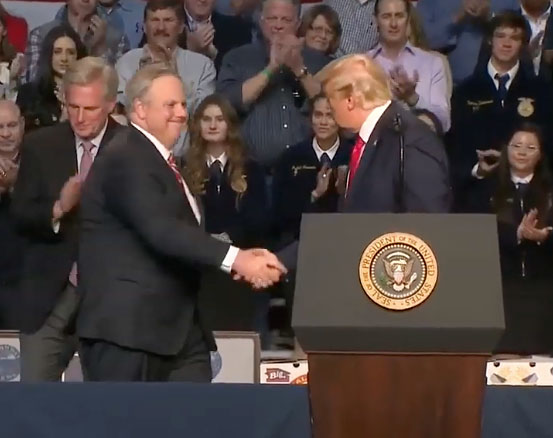
As soon as the new federal rules were signed, California Attorney General Xavier Becerra filed a state lawsuit to stop them. This should aid our efforts to block the new rules.

Interior Secretary Bernhardt was a lobbyist and attorney for the Westlands Water District in the dry western San Joaquin Valley before being appointed by Donald Trump to run the US Interior Department.
The new Trump/Bernhardt rules will allow for an additional 600,000 to one million acre feet of water to be siphoned from salmon rivers and the Delta for delivery to Bernhardt’s former clients. This at a time when the State Water Resources Control Board has found the Delta (and salmon runs) needs significantly more water to stay healthy. Ironically, the giant Metropolitan Water District of Southern California (MWD), which favored the boosted water diversions, won’t get any extra water. In fact they’ll be forced to give up water to keep the unbridled federal water diversions from violating California’s state Endangered Species Act (CESA).
In addition to seeking a court order to stop this looming annihilation of our salmon rivers, the state may be forced to bring a separate suit to force the federal government to comply with CESA to protect not only endangered wildlife, but also MWD’s water supply!
Atop all of this, the Newsom administration is (or was) bogged down in negotiations with the big Central Valley water districts to try to win voluntarily win back some of the water currently diverted. So far the water districts have shown little sign of giving any water give back. Since the state AG filed suit against the Trump rules, the water districts have largely retreated from negotiations, leaving the state negotiators to negotiate with themselves.
American River Improvement needed for Nimbus hatchery, downstream river
GSSA recently toured the Nimbus hatchery and came away with a small list of problems needing solving. Topping the list is the broken temperature control device mounted on the upstream side of the Folsom Dam. Fixing would allow cold water, needed for salmon spawning in the fall, to be moved from Folsom Lake downstream to where it’s needed at Nimbus hatchery and the lower American River. The US Bureau of Reclamation, which operates the dam, say the US Army Corps of Engineers is the right agency to fix it. No one seems to be able to get an answer out of the Army Corps, which at first said they’d fix the TCD while it was raising Folsom Dam (which is happening now) but later apparently dropped this commitment.
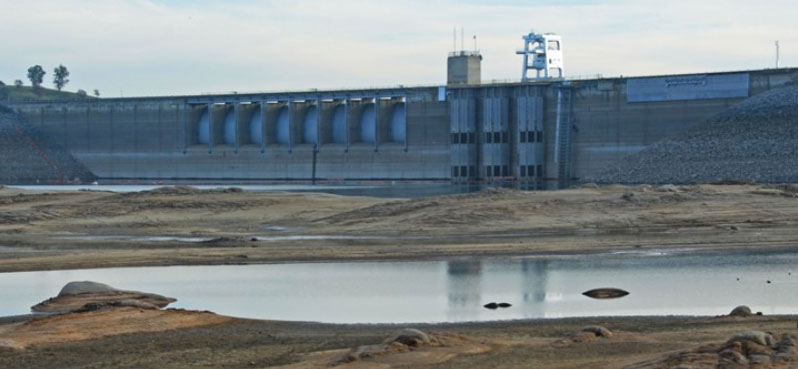
That’s not all. The Nimbus hatchery needs to filter the water brought into the hatchery to hatch eggs. They got some filtration equipment a few years back but ran out of money to get it all installed. So some of it is just sitting there. Adding this equipment would cut down on the loss of incubating salmon eggs in the hatchery that develop fungal infections and die. The Bureau of Reclamation should pay for this but so far hasn’t.
DWR will pay for net penning going forward, save CDFW $
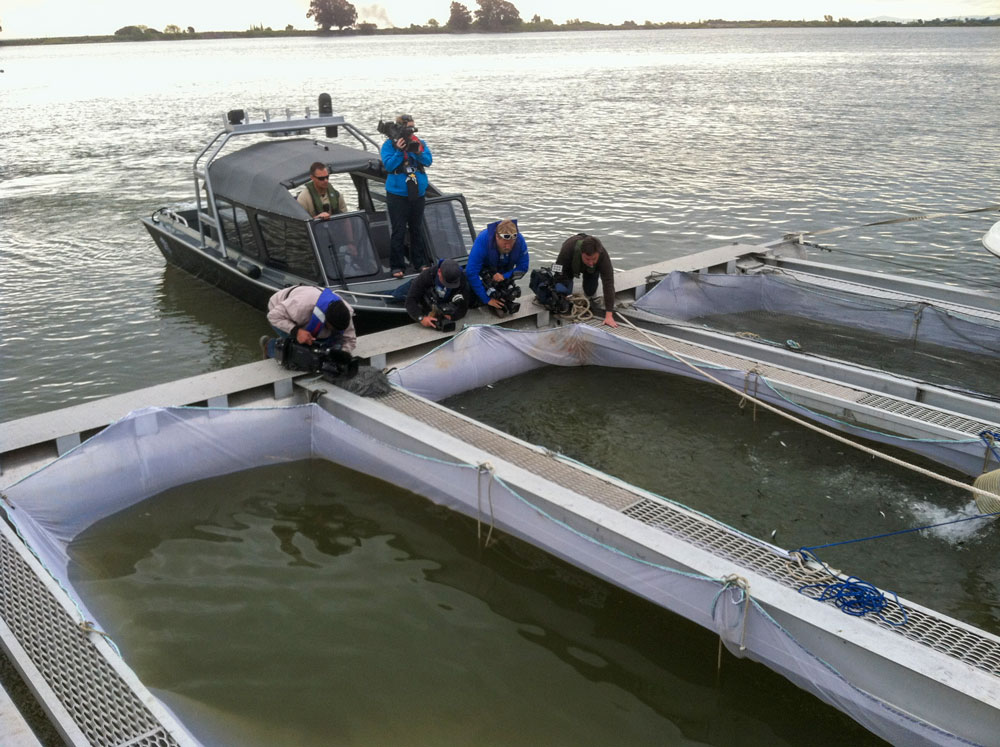
In a big step forward the California Dept of Water Resources has finally committed to paying for net pen acclimation of Feather River hatchery fish trucked to the bay. This follows a successful effort by GSSA a few years back which resulted in DWR paying for the cost of coded wire tags for the first time. Those who built and operated the big dams in the state are responsible to pay for the hatcheries built to mitigate for the loss of salmon habitat upstream of the dams. DWR has long tried to draw a line and pay only for immediate operation of the hatchery but not the survival and tracking of the fish. This is now changing. Other responsible dam owners, including the US Bureau of Reclamation (Shasta and Folsom dams) and the East Bay Muni Utility District (Pardee and Commanche dams) already pay for steps to identify and boost survival of the hatchery fish they’re responsible for.
